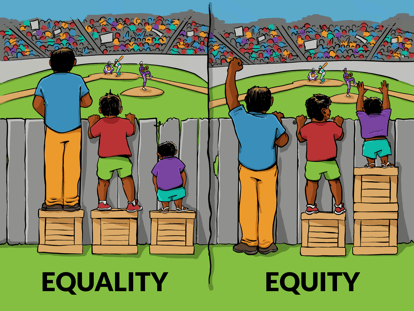Navigating the Landscape of Educational Equity
"Charting a Course for Inclusive Learning: Explore the Journey of Navigating Educational Equity in Our Latest Blog. #EquityInEducation #InclusiveLearning"
EDUCATIONAL CHALLENGES
Ashwani Shukla
12/2/20232 min read


In a world fuelled by innovation and progress, the concept of educational equity stands as a beacon of hope, promising to level the playing field and provide every individual with a fair shot at success. Yet, the reality often falls short of this ideal, as disparities in access, resources, and opportunities continue to persist within our education systems. This blog delves into the critical topic of educational equity, shedding light on its significance, challenges, and the path forward.
Understanding Educational Equity
Educational equity revolves around the principle of ensuring that every student, regardless of their background, identity, or circumstances, has an equal chance to access high-quality education. It recognizes that different students require different levels of support to thrive, and it strives to eliminate the barriers that hinder some students from realizing their full potential.
The Significance of Educational Equity
Fosters Social Justice: Educational equity is a cornerstone of social justice. By providing an equal educational foundation, societies can begin to address systemic inequalities that perpetuate through generations.
Economic Empowerment: Access to quality education translates into economic empowerment. When individuals are equipped with the skills and knowledge to succeed, they contribute to a stronger, more prosperous society.
Diversity Drives Innovation: A diverse educational environment cultivates diverse perspectives and ideas, leading to innovation and progress. Educational equity ensures that every voice is heard and valued.
Challenges on the Path to Equity
Resource Allocation: Unequal distribution of resources often leads to significant gaps in educational quality between affluent and marginalized communities.
Cultural Bias: Educational materials, curricula, and teaching methods can sometimes unintentionally favor one culture or identity over others, leading to disparities in learning outcomes.
Access to Technology: In today's digital age, lack of access to technology can widen the achievement gap, as online learning becomes increasingly prevalent.
Strategies for Promoting Educational Equity
Equitable Funding: Governments and institutions must allocate resources based on student needs, channeling extra support to disadvantaged schools and students.
Inclusive Curriculum: Curriculum should be diverse, representative, and culturally sensitive, reflecting the experiences and contributions of all communities.
Teacher Training: Educators should receive training to recognize and address biases, ensuring a fair and inclusive classroom environment.
Community Engagement: Involving parents, families, and communities in education decisions can help bridge gaps and create a supportive network for students.
Technology Access: Initiatives to provide technology and internet access to underserved areas can help prevent a digital divide.
The Road Ahead:
Achieving educational equity is a complex, ongoing process that requires the collective efforts of policymakers, educators, families, and society as a whole. It demands a commitment to breaking down barriers, challenging biases, and creating environments where all students feel valued and empowered.
As we move forward, let's remember that educational equity is not just an aspiration; it's a necessity for building a brighter future. By embracing diversity, providing equal opportunities, and fostering an inclusive educational ecosystem, we can pave the way for a world where every individual's potential can be realized, regardless of their background.
